 |
||||||||||||||
The External Tank (ET) is the largest piece of the Space Shuttle system. Presented here are photographs of the ET at the Michoud Assembly Facility in New Orleans, Louisiana. Click the link to read a full story about the facility and the recovery efforts following Hurricane Katrina in August 2005. |
||||
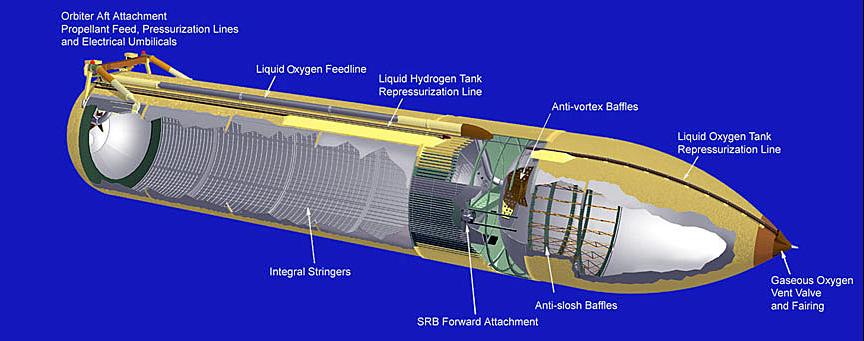 |
||
Cutaway view of the External Tank. (courtesy NASA) |
||
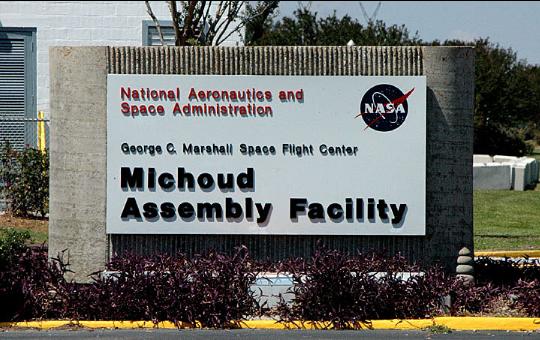 |
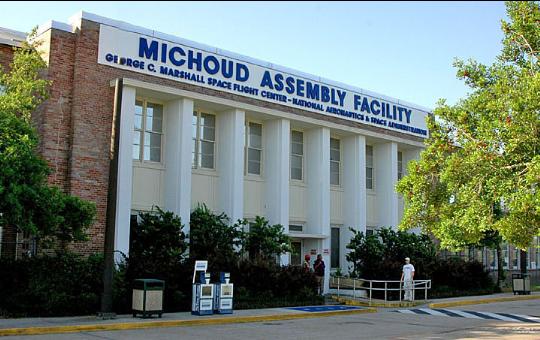 |
|||
The entrance to the Michoud Assembly Facility. |
||
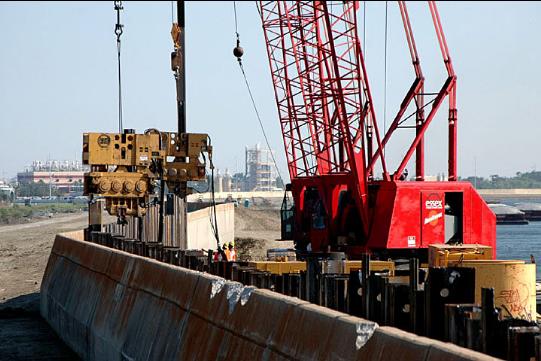 |
||||
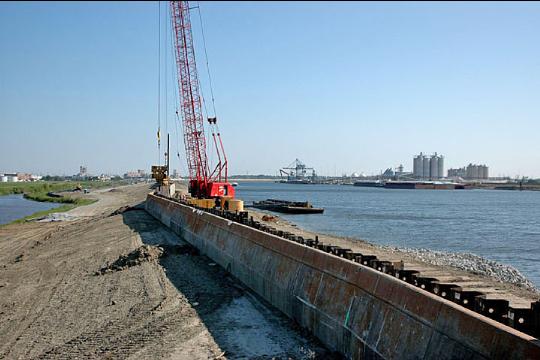 |
||||
The levee system is rebuilt and reinforced after Hurricane Katrina. |
||
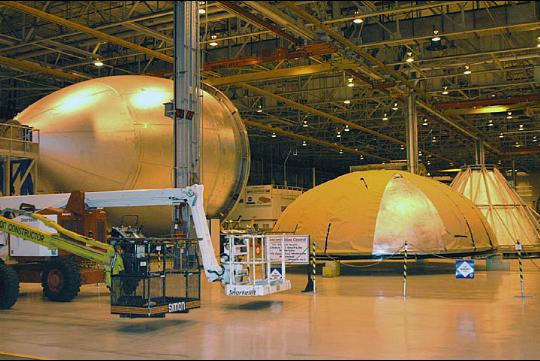 |
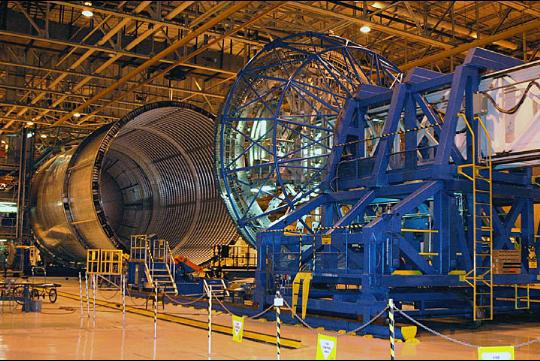 |
|||
The liquid oxygen (LOX) tank and rear cap of the ET. |
The liquid hydrogen (LH2) tank. |
|||
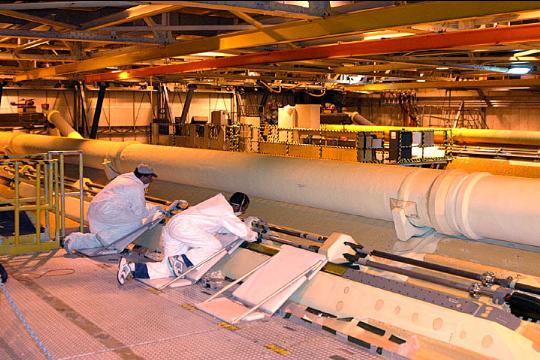 |
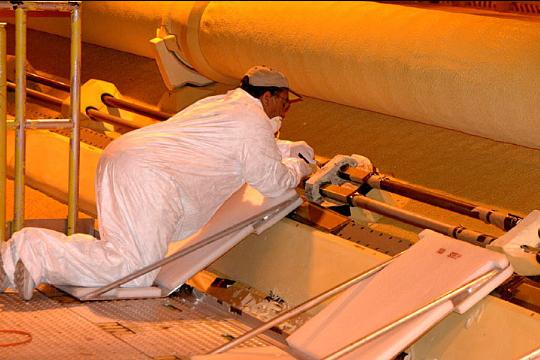 |
|||
With the tank in a horizontal position, workers sculpt the foam to the final configuration. |
||
 |
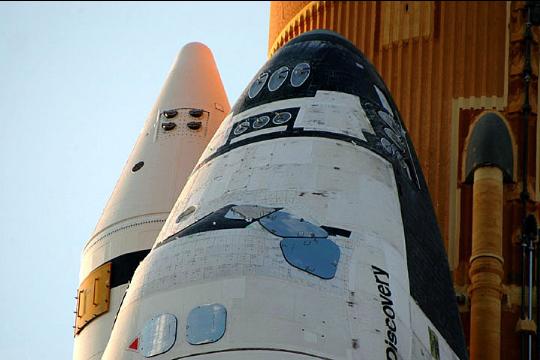 |
|||
The LOX feedline exits the intertank area of the ET. |
The same location can be seen with the shuttle mated to the tank. |
|||
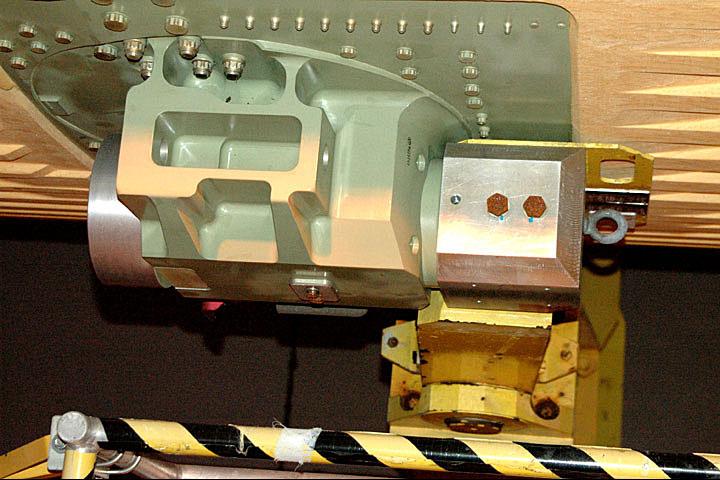 |
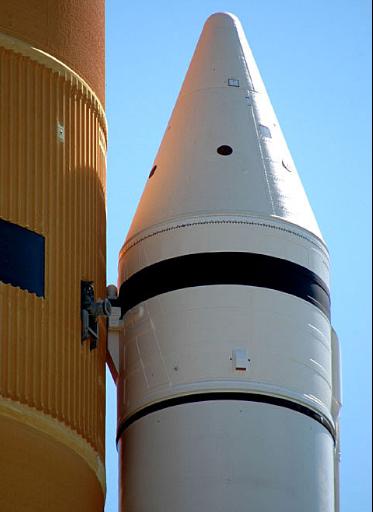 |
||||
The Solid Rocket Booster (SRB) fitting on the ET (above). SRB attached to the ET on the way to the launch pad (right). |
|||||
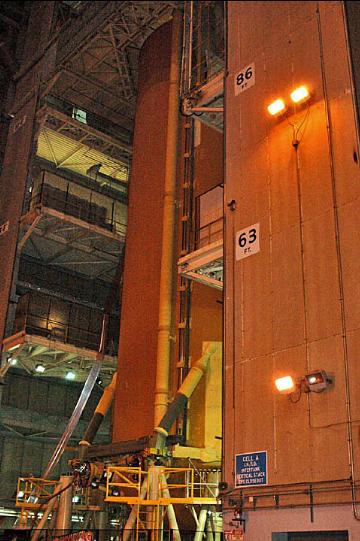 |
 |
|||||
 |
||||||
The ET in the vertical checkout bay in Michoud. |
The aft umbilicals that supply fuel to the Space Shuttle Main Engines (SSMEs). |
The aft umbilical attached to the underside of orbiter Discovery. |
||||
 |
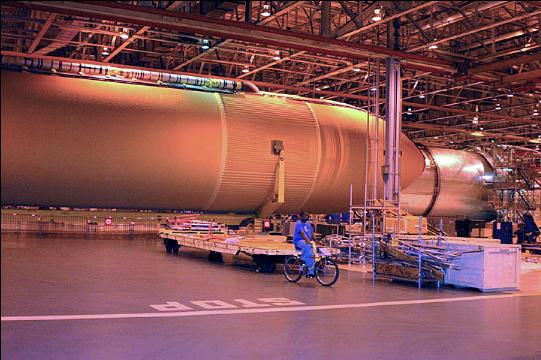 |
|||
Workers at the ET assembly facility. |
An ET in the main production plant. Scale can be gaged by the worker on a bicycle next to the ET. |
|||
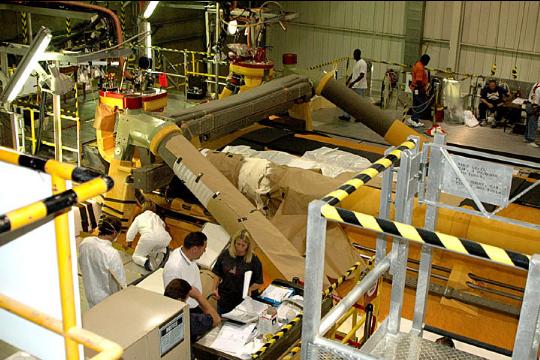 |
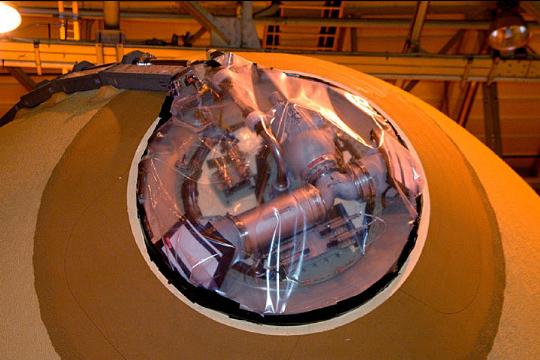 |
|||
The aft umbilicals on an ET in the horizontal position. |
Underneath the nose cap of the ET. |
|||
 |
 |
|||
ET in handling cradle showing intertank. |
Working on the intertank section. |
|||
 |
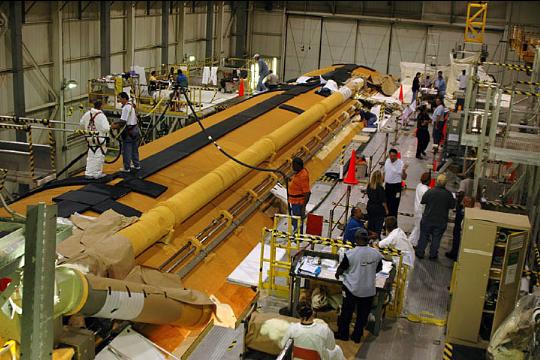 |
|||
Workers vacuum the ET foam to remove small particulate matter. |
ET horizontal checkout facility. |
|||
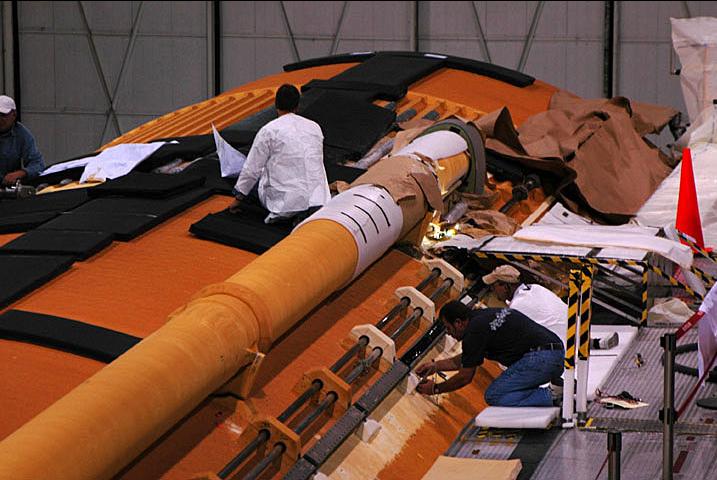 |
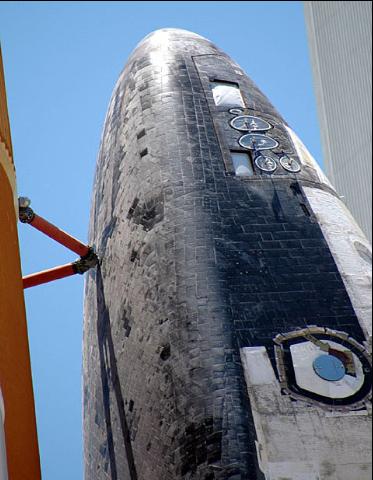 |
|||
The orbiter nose is attached to the ET forward section by what is called a bipod. The area where the bipod will be installed is shown at left and the bipod attached to the orbiter Space Shuttle Discovery is shown at right. |
||
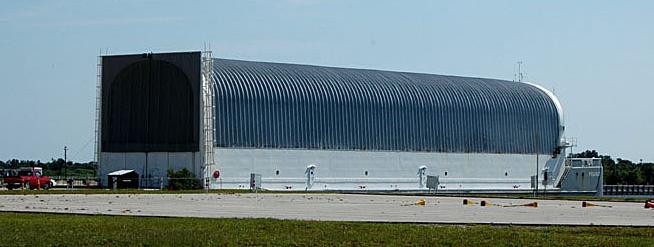 |
||
Once completed, the ET is barged from New Orleans to the Kennedy Space Center aboard this special container ship. Shown here is the Pegasus docked near the Vehicle Assembly Building at KSC. |
||
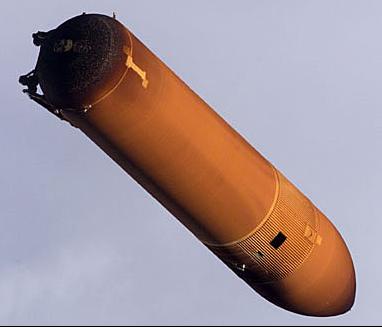 |
||||
Post Launch
NASA photos of the External Tank after jettison from the orbiter. Burning can be seen along the bottom of the ET where low pressure, as it rises higher in the atmosphere, allows heat from the main engines to swirl. On the close-up at bottom, you can see the scorch marks from the Solid Rocket Booster separation, two minutes into flight. |
||||
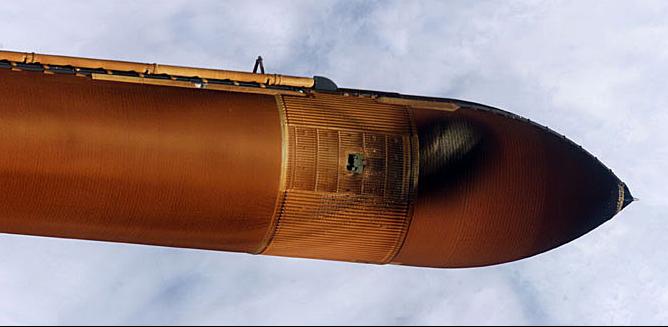 |
||